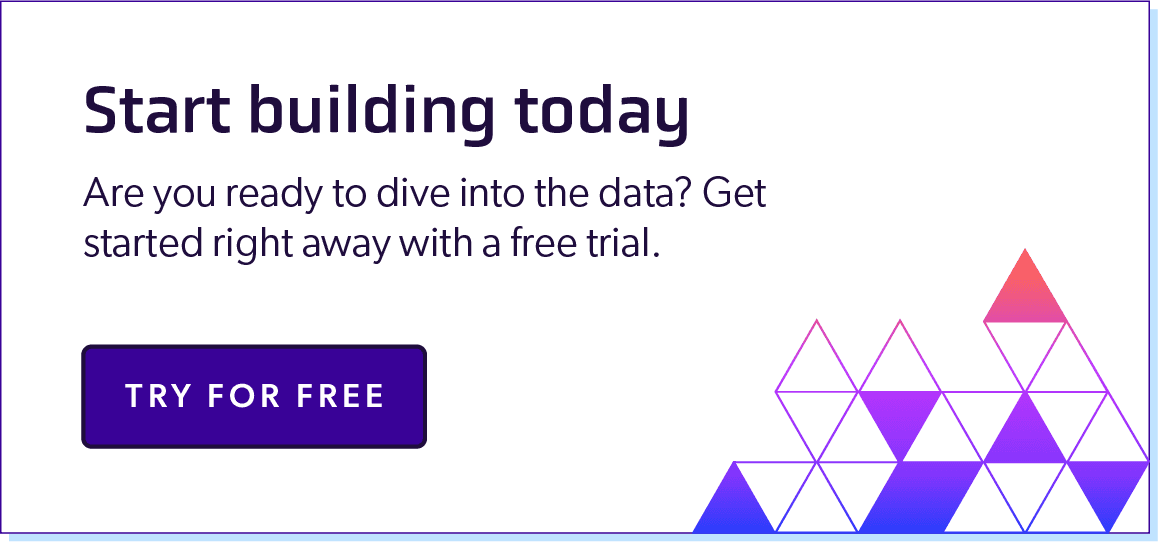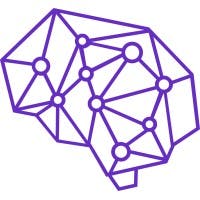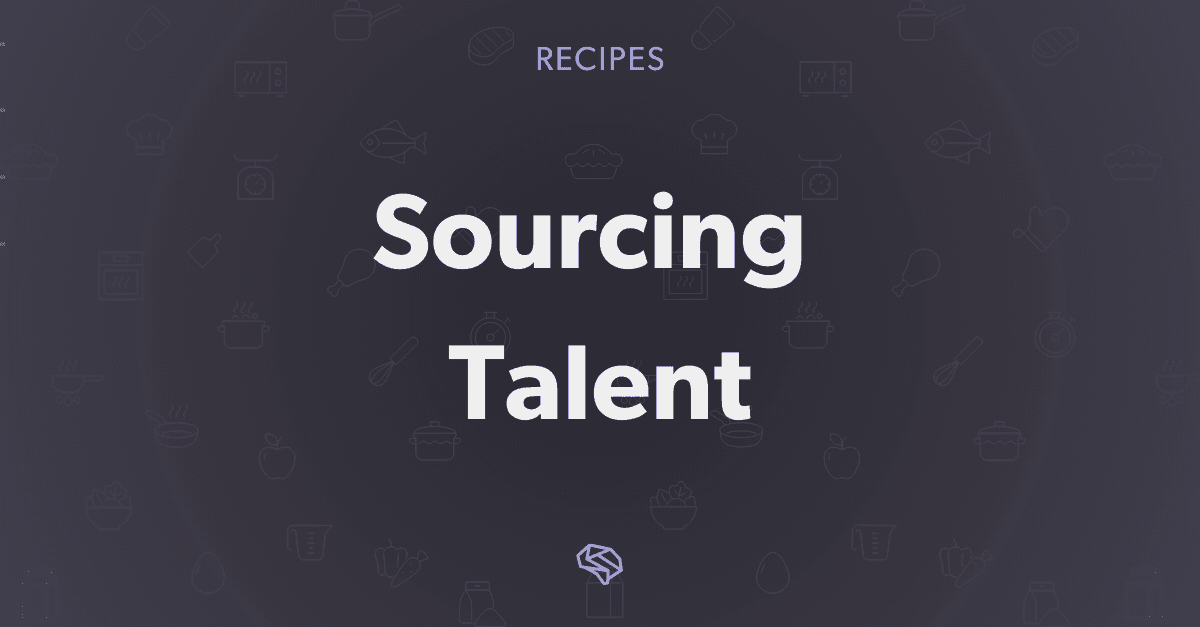
How to Utilize Data in the Recruitment Process to Find & Hire the Best Candidates
October 18, 2021
Table Of Contents
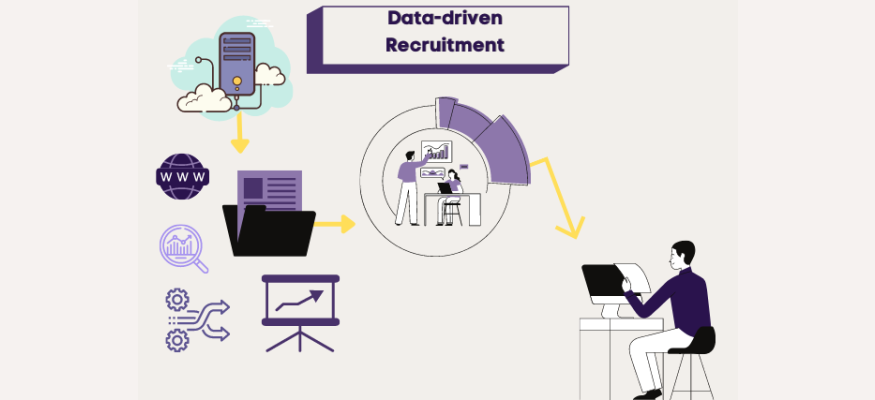
Building a robust and diverse team is one of the most important aspects of any organization. The right people can impact anything and everything, from company culture to the bottom line.
However, according to a study conducted by Zippia, the average time to hire ranges between 36 and 42 days. Shortening your hiring cycle is vital to avoid business process disruptions and to effectively scale your team as your company grows.
Savvy companies can utilize company data to quickly secure top talent without sacrificing quality. In this article, we’ll review everything you need to know to effectively use data to find the best talent in the fastest way possible.
What Is Data-Driven Recruitment?
Data-driven recruitment is an organizational approach that incorporates data such as email addresses, work experience, social pages, and other contact information to optimize the entire hiring funnel, including:
Sourcing
Screening
Assessing
Interviewing
Verifying
Selecting
Offering
Hiring
No matter how large or small, any organization accrues a large number of HR data over time. By combining internal and third-party data, companies gain a broader range of benefits, improving short, mid, and long-term decision making.
What Are the Main Benefits of Data-Driven Recruitment?
Whether you're looking for candidates with the right skills or trying to determine which openings you need to fill next, data plays a vital role in every step of the process.
As opposed to relying on human diligence alone, the data-driven approach brings unique benefits, including (but not limited to):
Reducing Time to Fill
Time and energy spent on sourcing, qualifying, and hiring candidates is reduced, preventing your HR team from wasting time pursuing poor-fit candidates.
For instance, instead of taking time to interview dozens or even hundreds of candidates, data-driven recruiting helps you narrow your search quickly to a couple dozen best-fit candidates. This reduces the time needed for each step of the talent acquisition process, and frees your HR team to focus on engaging your most needed candidates.
Eliminating Bias
Conscious and unconscious bias is removed from the hiring process to ensure that your company builds a diverse workforce, exemplifies an equal opportunity work culture, and attracts top talent from different backgrounds and experiences.
Companies with higher degrees of racial and ethnic diversity outperform less diverse organizations by 35 percent. By building an inclusive data-driven recruitment process, hiring managers automate the recruitment process to highlight the best fits based on merit alone, making it more inclusive of diverse candidates.
Access to a Larger Talent Pool
With 80% of employers reporting finding qualified talent as one of their biggest challenges, leveraging accurate company data dramatically expands your accessible talent pool
With a large, easily-accessible, and highly accurate B2B database, best potential candidates are selected on a scale that would never be possible to achieve if you relied solely on internal resources or datasets from 2018.
Raising the Talent Bar
Quantity doesn’t necessarily translate into quality. In fact, with the cost of a bad hire averaging around $240,000, screening out poor-fit candidates is vital to ensure an effective hiring process.
With data-driven recruiting, companies can enrich candidate data to better understand candidates best qualified for specific positions, reducing the odds of pursuing the wrong candidates and significantly increasing the overall quality of your talent pool.
Reducing Cost Per Hire:
From sourcing to screening accurate and easily-accessible B2B data streamlines every stage of the recruitment pipeline, massively reducing the expenses associated with the hiring process across the board.
What Kind of Data Can Recruiters Collect and Use?
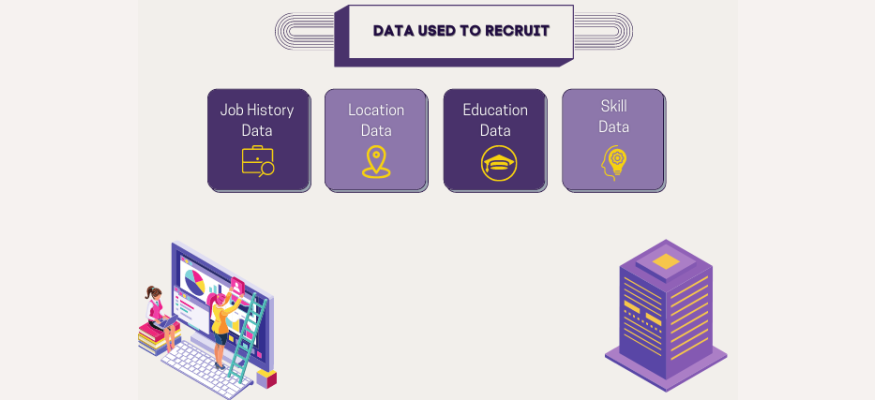
The data used to find the best candidates depends on the position being filled and your hiring process.
To make better hiring decisions, consider the following 4 types of data to enhance your recruitment process:
Job history data tells you if a given candidate has the experience and skillset you are looking for, and how willing they might be to make a move based on their average stay at each of their previous jobs.
Location data tells you whether or not the candidate might agree to relocate based on the location of each job they have held in the past, and where they currently live. You can also find candidates that are only looking within a certain radius from their current place of residence.
Education data helps you determine if a candidate has the right type of educational background for the role you’re trying to fill. You can also find candidates with a certain level of education or specific qualifications, such as having an MBA.
Skill data entails any information related to what your potential hire can actually do for your company, allowing you to assess whether they are qualified for the position you’re trying to fill.
When combined, this information provides a comprehensive picture of each candidate, helping your HR team quickly identify and secure top talent.
How to Implement Candidate Data Into Your Hiring Process
Let's take a look at 8 common steps associated with the hiring process to understand how data can be leveraged to enhance the decision-making process:
Sourcing
Sourcing entails finding and building rapport with potential candidates. For data-driven sourcing, you can use data to find top talent and screen out unqualified individuals.
From free sources like LinkedIn to third-party candidate databases, you can search using relevant keywords to uncover a large number of high-quality candidates you would’ve otherwise missed.
Screening
During the screening process, your HR team needs to analyze data from multiple sources to get more information on candidates’ work history and overall experiences.
For data-driven pre-screening, you can look at data such as years of experience or education level to determine if they are qualified for a certain role.
Assessing
Now that you have selected which candidates meet all of your requirements, it's time to evaluate specific knowledge, skills, and competencies that can be linked to job performance.
For data-driven candidate assessment, you can use a series of tests to ensure that the candidate's skills match their resume.
Interviewing
Interviewing your candidates is a must before you make any hiring decisions.In this case, the results of a structured interview can signal which candidates are the fit for the role you’re trying to fill.
You could also use data such as the interests or personality traits of a given candidate to identify cultural fit more accurately.
Verifying
Once you have singled out potential hires, you need to verify the accuracy of the information they provided.
From running an employment verification check to confirming whether a given candidate has actually earned the diploma or degree claimed, you need a comprehensive and accurate picture of the person you’re considering to avoid making costly mistakes.
Candidate verification involves crosswalking multiple data sources to accurately confirm actual qualification levels before extending an offer of employment.
Selecting
Since job listings attract 250 applicants on average, you’re likely to find yourself in a situation where you need to choose from the best by ranking the candidates that made it through all of the previous phases.
Data-driven talent acquisition removes the guesswork by using tools like assessment scores, effectively eliminating subjectivity from the hiring process to achieve the best possible outcome.
Negotiating
Once an offer has been made, candidates may want to negotiate a higher salary or more benefits.
When negotiating employee compensation, you can use data such as years of experience, job history, and salary data to determine a middle ground where both parties are happy.
Hiring & Orientation
Great employee onboarding experience can boost retention by as much as 82 percent. Data-driven orientation prevents you from constantly losing great people before they even start bringing value to your organization.
Using metrics like time-to-productivity along with candidate feedback can help you structure the onboarding process in a way that shortens your new employees’ learning curve and improves their satisfaction, reducing onboarding drop-off.
Supercharge Your Recruiting Process
Recruiting is a data-heavy process. Its results are as good as the data you rely on.
To make the search for top talent less challenging, some of the world’s best companies partner up with third-party data vendors like People Data Labs to handle the process of collecting, managing, and validating billions of records. They can then focus on the things that truly matter - finding great talent and building their offerings.
With talent acquisition being our very first use case, People Data Labs leverages the power of 2.5 billion records to help HR teams easily access fresh and accurate recruiting data, empowering better decision-making across the entire recruiting funnel.
Read More: How to Use People Data Labs for Recruiting
To learn how you can improve your hiring method with data, get in touch with us today to schedule a free consultation.
Like what you read? Scroll down and subscribe to our newsletter to receive monthly updates with our latest content.
